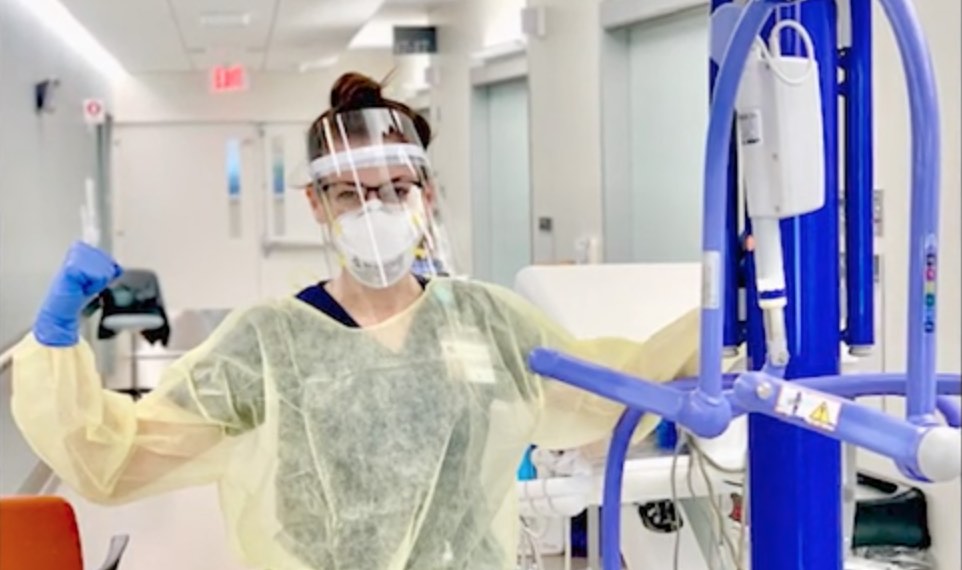Diagnostic criteria for acute lung injury may be too stringent
Reuters Health • The Doctor's Channel Daily Newscast
September 18, 2009 • Critical Care, Emergency Medicine, Hospitalist, Internal Medicine, Medical Students, Pediatrics, Pulmonary Medicine, Reuters Health • The Doctor's Channel Newscast, Surgery
NEW YORK (Reuters Health) – Given that arterial lines are used less frequently in pediatric ICUs these days, the criteria for diagnosis of acute lung injury are less often available, making it extremely difficult to conduct randomized controlled trials of therapies in children with this condition.
In fact, say researchers in the September issue of Chest, it may never be feasible to design a randomized controlled trial of pediatric acute lung injury with mortality as an outcome.
Dr. Robinder G. Khemani at Childrens Hospital Los Angeles and colleagues reviewed data they collected while screening children in PICUs for a prospective trial of prone positioning for acute lung injury. They note that guidelines for diagnosis of acute lung injury require that the ratio of PaO2/FiO2 (PF) be computed, which is only possible with invasive blood gas measurements via arterial lines.
Altogether, they screened 12,213 children, ages 2 weeks to 18 years, who were intubated and receiving mechanical ventilation at 16 US hospitals between 2001 and 2004.
Of the patients who required intubation and mechanical ventilation, at least 60% clearly did not have acute lung injury. “However, within the remaining 40% of patients, we do not know how many met other criteria for acute lung injury,” the authors stated.
At least 1,457 children (15%) with respiratory failure did not have arterial lines in place, and so computation of PF was not possible. A subset of 904 children did have known values for FIO2 and saturation of peripheral oxygen (SpO2), however. The authors claim that a pulse oximetric saturation ratio of less than 270 (calculated “with a…SpO2 not more than 97% and a concurrent FIO2”) corresponds with PFs of less than 300, and that if this criterion were used, “104 of these 904 patients would have met the oxygenation criteria for acute lung injury.”
These 104 children would have doubled the number the investigators were able to enroll in their randomized trial.
Children with severe injuries are likely to have arterial blood gas data available, the researchers note. But “when attempting to design studies that target patients with less severe lung injury (e.g., acute lung injury versus acute respiratory distress syndrome), the arterial blood gas criteria may be too stringent,” they suggest.
“The PF requirement to make the diagnosis of acute lung injury can significantly hamper eligibility for multicenter trials on acute lung injury,” the researchers conclude.
Reference:
Chest 2009;136:765-771.
In fact, say researchers in the September issue of Chest, it may never be feasible to design a randomized controlled trial of pediatric acute lung injury with mortality as an outcome.
Dr. Robinder G. Khemani at Childrens Hospital Los Angeles and colleagues reviewed data they collected while screening children in PICUs for a prospective trial of prone positioning for acute lung injury. They note that guidelines for diagnosis of acute lung injury require that the ratio of PaO2/FiO2 (PF) be computed, which is only possible with invasive blood gas measurements via arterial lines.
Altogether, they screened 12,213 children, ages 2 weeks to 18 years, who were intubated and receiving mechanical ventilation at 16 US hospitals between 2001 and 2004.
Of the patients who required intubation and mechanical ventilation, at least 60% clearly did not have acute lung injury. “However, within the remaining 40% of patients, we do not know how many met other criteria for acute lung injury,” the authors stated.
At least 1,457 children (15%) with respiratory failure did not have arterial lines in place, and so computation of PF was not possible. A subset of 904 children did have known values for FIO2 and saturation of peripheral oxygen (SpO2), however. The authors claim that a pulse oximetric saturation ratio of less than 270 (calculated “with a…SpO2 not more than 97% and a concurrent FIO2”) corresponds with PFs of less than 300, and that if this criterion were used, “104 of these 904 patients would have met the oxygenation criteria for acute lung injury.”
These 104 children would have doubled the number the investigators were able to enroll in their randomized trial.
Children with severe injuries are likely to have arterial blood gas data available, the researchers note. But “when attempting to design studies that target patients with less severe lung injury (e.g., acute lung injury versus acute respiratory distress syndrome), the arterial blood gas criteria may be too stringent,” they suggest.
“The PF requirement to make the diagnosis of acute lung injury can significantly hamper eligibility for multicenter trials on acute lung injury,” the researchers conclude.
Reference:
Chest 2009;136:765-771.









